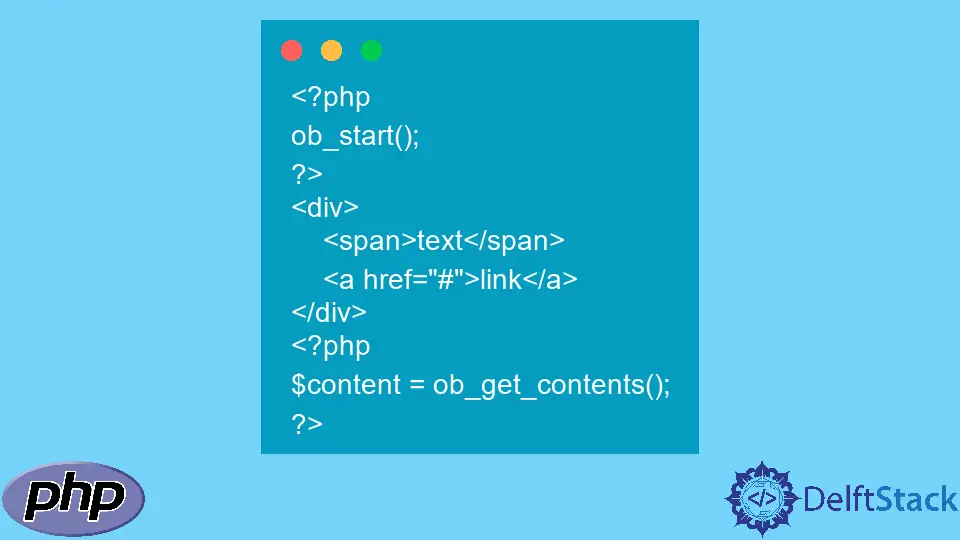在 PHP 中使用 ob_start 方法缓冲输出数据
Kevin Amayi
2023年1月30日
-
使用
ob_start方法缓冲简单字符串,然后使用 PHP 中的ob_get_contents方法获取数据 -
在 PHP 中使用
ob_start方法缓冲 HTML 数据并使用ob_get_contents方法获取数据 -
使用带有回调函数的
ob_start方法缓冲字符串数据并替换字符串中的字符

我们将使用 ob_start 方法初始化一个缓冲区,然后输出一个简单的字符串,该字符串将被自动缓冲;然后,我们将使用 ob_get_contents 方法从缓冲区中获取数据,然后将其打印出来。
我们还将初始化一个缓冲区 ob_start 方法,然后输出一个 HTML 块,该块将自动缓冲;然后,我们将使用 ob_get_contents 方法从缓冲区中获取数据,然后将其打印出来。
最后,我们将初始化一个缓冲区 ob_start 方法,声明一个将自动缓冲的简单字符串,然后使用传递给 ob_start 方法的回调替换字符串中的数据。
使用 ob_start 方法缓冲简单字符串,然后使用 PHP 中的 ob_get_contents 方法获取数据
我们将设置 ob_start,然后输出一个自动缓冲的简单字符串;然后我们将使用 ob_get_contents 从缓冲区中获取数据并打印它。
<?php
ob_start();
echo("Hello there!"); //would normally get printed to the screen/output to browser
$output = ob_get_contents();
echo $output;
?>
输出:
Hello there! Hello there!
在 PHP 中使用 ob_start 方法缓冲 HTML 数据并使用 ob_get_contents 方法获取数据
我们将设置 ob_start,然后自动缓冲输出 HTML 数据;然后我们将打印缓冲的数据。
<?php
ob_start();
?>
<div>
<span>text</span>
<a href="#">link</a>
</div>
<?php
$content = ob_get_contents();
?>
输出:
<div>
<span>text</span>
<a href="#">link</a>
</div>
使用带有回调函数的 ob_start 方法缓冲字符串数据并替换字符串中的字符
我们将设置 ob_start,然后自动缓冲输出 HTML 数据;然后我们将打印缓冲的数据。
<?php
//Declare a string variable
$str = "I like PHP programming. ";
echo "The original string: $str";
//Define the callback function
function callback($buffer)
{
//Replace the word 'PHP' with 'Python'
return (str_replace("PHP", "Python", $buffer));
}
echo "The replaced string: ";
//call the ob_start() function with callback function
ob_start("callback");
echo $str;
?>
输出:
The original string: I like PHP programming. The replaced string: I like Python programming.